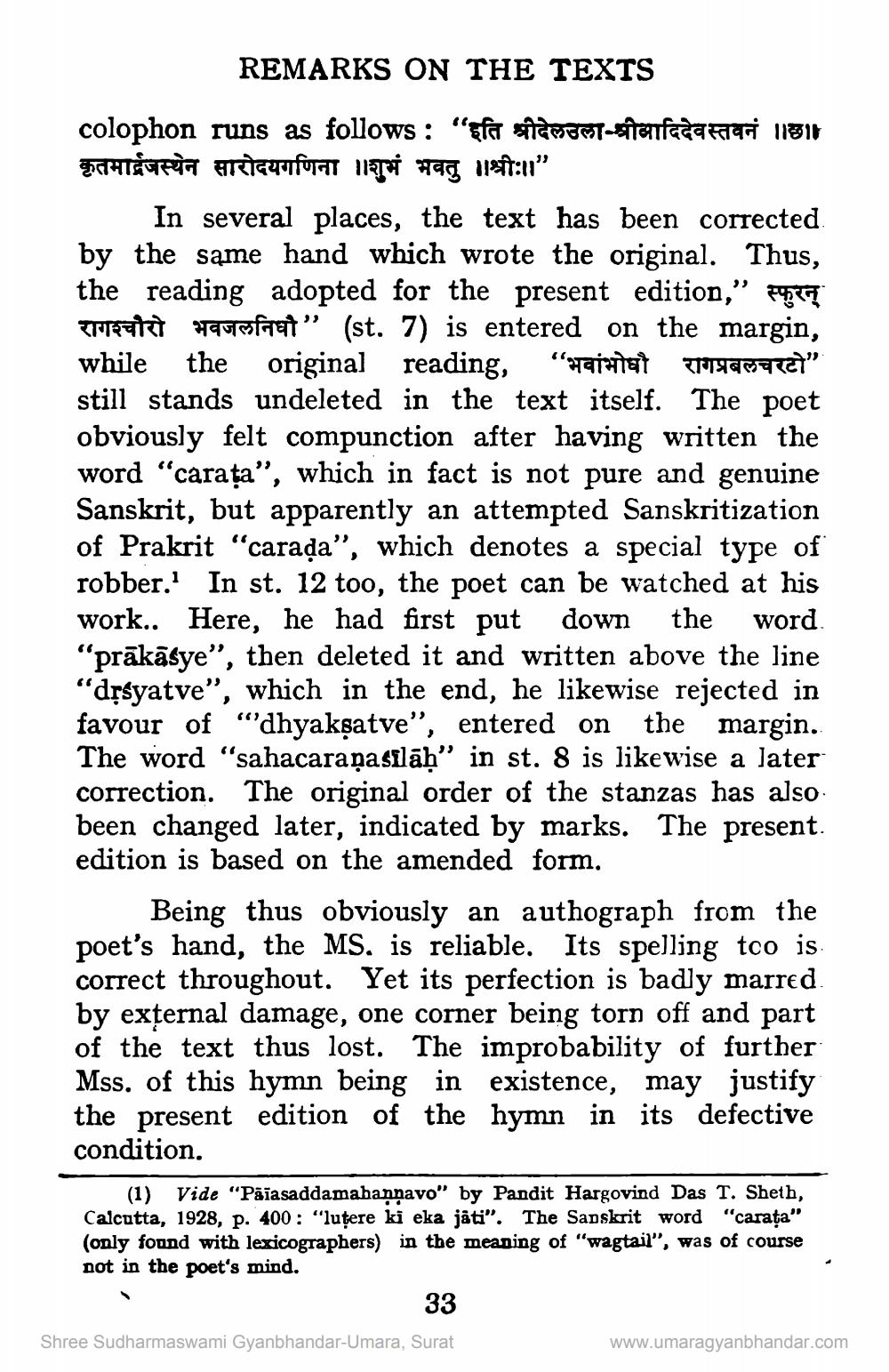________________
REMARKS ON THE TEXTS colophon runs as follows: "Efet stamon-sitaifaca fal 11911 कृतमाईजस्थेन सारोदयगणिना ॥शुभं भवतु ॥श्रीः।"
In several places, the text has been corrected. by the same hand which wrote the original. Thus, the reading adopted for the present edition," para matt Haurofirat” (st. 7) is entered on the margin, while the original reading, "Haritat amaret" still stands undeleted in the text itself. The poet obviously felt compunction after having written the word "carata”, which in fact is not pure and genuine Sanskrit, but apparently an attempted Sanskritization of Prakrit "caraļa”, which denotes a special type of robber.' In st. 12 too, the poet can be watched at his work.. Here, he had first put down the word. "prākāsye", then deleted it and written above the line "dřsyatve", which in the end, he likewise rejected in favour of "dhyaksatve", entered on the margin. The word "sahacaraṇasilāh" in st. 8 is likewise a later correction. The original order of the stanzas has also been changed later, indicated by marks. The present. edition is based on the amended form.
Being thus obviously an authograph from the poet's hand, the MS. is reliable. Its spelling too is correct throughout. Yet its perfection is badly marred. by external damage, one corner being torn off and part of the text thus lost. The improbability of further Mss. of this hymn being in existence, may justify the present edition of the hymn in its defective condition.
(1) Vide "Päiasaddamabannavo" by Pandit Hargovind Das T. Sheth, Calcutta, 1928, p. 400: "lutere ki eka jäti". The Sanskrit word "carata" (only found with lexicographers) in the meaning of "wagtail", was of course not in the poet's mind.
33
Shree Sudharmaswami Gyanbhandar-Umara, Surat
www.umaragyanbhandar.com




